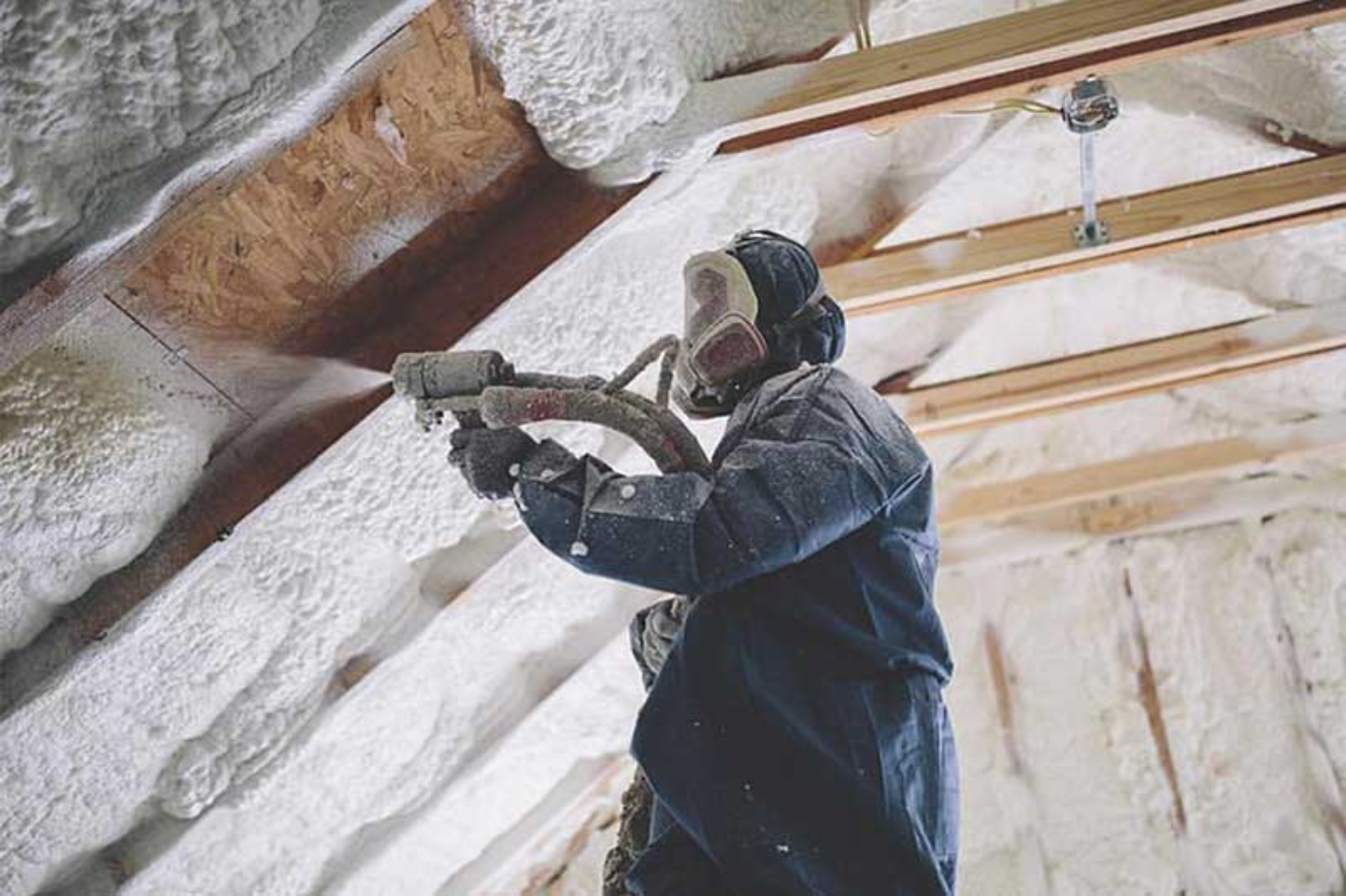
Spray foam insulation is often discussed in terms of energy savings and moisture control, but its performance and safety in extreme cold climates remain a significant concern for many homeowners. Understanding how this insulation material behaves in subzero conditions can help guide smart building decisions in places like Alaska, Northern Canada, or mountainous regions where winter temperatures routinely drop well below freezing.
Spray foam is a chemical product created by mixing isocyanate and polyol resin. When combined, these components react and expand rapidly, forming a solid cellular structure that insulates, seals, and adheres to surfaces. This material exists in two main types:
In colder climates, closed-cell foam is more commonly used due to its insulation efficiency and low permeability.
Spray foam’s structure creates an airtight barrier that slows heat transfer. In freezing environments, this tight seal helps maintain indoor temperatures, lowering reliance on heating systems. Homes insulated with spray foam often experience fewer cold drafts and more stable room temperatures during prolonged cold snaps.
Some materials lose their performance capabilities when temperatures plummet. Closed-cell spray foam, however, retains its insulating properties even in extreme cold. Its rigid nature also provides added structural strength, which can be beneficial in areas prone to frost heave or snow load.
Ice dams form when heat escapes from a home, melts rooftop snow, and causes water to refreeze at the eaves. This process often leads to moisture intrusion, mold growth, and structural damage.
Spray foam limits this heat loss by eliminating air gaps. By keeping warm air inside and maintaining a consistent roof deck temperature, it reduces the formation of ice dams. Additionally, spray foam’s ability to resist water absorption lowers the risk of mold and mildew growth in attic spaces and wall cavities.
Spray foam must be applied at the correct substrate and ambient temperatures to cure properly. In extremely cold weather, special equipment or temporary heating may be required to ensure successful application. Improperly applied foam in freezing conditions may not adhere well or expand correctly, compromising its effectiveness.
Professional installers familiar with Arctic or sub-Arctic environments often use heated hoses and condition the building envelope before spraying. Selecting the right product rated for low-temperature applications is key.
During installation, the off-gassing process can release volatile organic compounds (VOCs). Adequate ventilation is required during and immediately after application. Once cured, spray foam is inert and does not continue to emit VOCs. Properly installed foam in cold regions poses no long-term indoor air quality concerns.
Heating costs in cold climates can account for more than half of a home’s total energy bill. Spray foam minimizes thermal bridging and air leakage, two major sources of heat loss.
In cold regions, this translates into:
Many homes see energy savings of 20–40% after switching to spray foam insulation.
Regions with harsh winters often have stricter insulation and building envelope requirements. Closed-cell spray foam typically exceeds minimum code requirements for R-value and air barrier performance.
In Alaska, for instance, the Alaska Housing Finance Corporation (AHFC) recommends high-R insulation and air-sealing methods consistent with what spray foam offers. Builders working in zones 7 and 8 often select spray foam to meet or exceed energy standards.
| Foam Type | R-Value per Inch | Vapor Barrier | Best Use |
|---|---|---|---|
| Open-cell | ~3.5 | No | Interior walls, soundproofing |
| Closed-cell | ~6.5 | Yes | Roofs, exterior walls, basements |
Closed-cell is preferred for most cold-climate applications due to its insulating performance and moisture resistance.
Once installed and cured, spray foam does not shrink or settle. This makes it a long-term insulation solution for homes in extreme cold. It resists freeze-thaw cycles and remains dimensionally stable over decades.
Rodents, a concern in rural cold regions, tend not to nest in spray foam, though they can chew through it if motivated. Routine inspections of vulnerable entry points remain necessary.
Spray foam installation in cold climates is not a beginner DIY task. Applying it without experience can lead to poor coverage, gaps, or moisture problems. It requires knowledge of building science, proper equipment, and attention to detail.
Turnagain Spray Foam has years of experience working with residential and commercial buildings across cold-weather zones. To request a site evaluation or get a quote, call (907) 444-1827 or email turnagainsprayfoam@gmail.com.
Once installed, spray foam is chemically stable and does not release emissions or particulates. Manufacturers continue to develop versions with lower global warming potential (GWP) blowing agents. In many regions, modern closed-cell foams meet environmental safety standards.
When paired with energy-efficient heating systems, homes insulated with spray foam consume less fuel, indirectly lowering carbon output.
Spray foam insulation is a safe and effective choice for homes in extreme cold climates when applied correctly. Its ability to seal, insulate, and reinforce structural elements makes it a practical solution for energy savings and comfort during harsh winters.
To learn more about how Turnagain Spray Foam can help insulate your home for the coldest conditions, call (907) 444-1827 or email turnagainsprayfoam@gmail.com.
Yes. Closed-cell spray foam performs well in extreme cold, providing insulation and air sealing that remain effective below freezing.
No. Once cured, spray foam remains stable and flexible enough to handle temperature swings without cracking.
Yes, but it requires heated equipment and may need surface conditioning. Professional installers have the tools to manage this.
Spray foam can last over 30 years without losing effectiveness, provided it’s not physically damaged or exposed to UV light.
Yes. Spray foam provides air sealing and higher R-values per inch, making it more efficient in cold environments.
Yes. Spray foam reduces heat loss through the roof, minimizing the conditions that lead to ice dam formation.
They can, but they don’t typically nest in it. Sealing all exterior entry points remains important.
Closed-cell spray foam is water-resistant and acts as a vapor barrier. Open-cell is not waterproof.
Most homes see noticeable reductions in heating costs, often ranging from 20–40% annually.
Yes. Proper mechanical ventilation is important in airtight homes to ensure healthy indoor air quality.